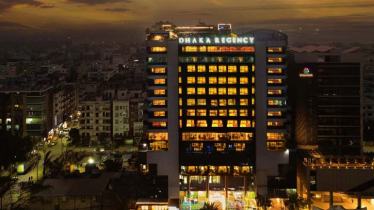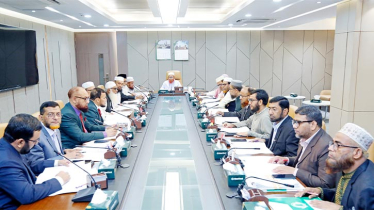
Photo: Messenger
Over the past 15 years, the government, under the leadership of the Awami League, has made significant strides in enhancing the nation's power generation capacity. According to data sourced from the Power Division's website, the country has witnessed a remarkable escalation, with the power generation capacity skyrocketing from 3,500MW to an impressive 26,504MW.
However, despite this substantial surge in capacity, the actual consumption of electricity during this period peaked at 15,648MW. This staggering difference between capacity and consumption has resulted in a concerning 90 percent idle capacity. This surplus capacity has raised eyebrows and sparked discussions among the populace.
State Minister for the Ministry of Power, Energy, and Mineral Resources, Nasrul Hamid, asserted in parliament on Thursday that the current installed capacity of the country now stands at 29,727MW, marking a 90 percent surplus over the current consumption levels. Despite this surplus, the government plans to establish additional power plants capable of producing 19,360MW by 2027, relying on imported LNG, coal, and fuel oil.
However, industry experts say that this expansion has lead to a hike in electricity prices. They argue that the power sector already has significant untapped capacity, and adding more plants could strain the economy. Moreover, the reliance on imported fossil fuels, which are currently experiencing higher prices due to global economic stagnation and a dollar crisis, could exacerbate the situation.
However, Nasrul Hamid defended the government's stance, stating to the Daily Messenger, "Bangladesh is experiencing rapid growth. It's imperative that we support the burgeoning industry and prepare for the demands of the future."
“It is true the global economy is currently unstable, but we are also improving our economy. I think, we will overcome all the crisis timely,” he said.
The Consumers Association of Bangladesh (CAB) Energy Adviser, Professor Shamsul Alam, expressed strong concerns about the government's energy plan, describing it as imprudent and unrealistic. He emphasized that the estimations provided do not align with reality, particularly considering the consistent hikes in power prices over the past 15 years. Alam pointed out that the reliance on imported LNG, coal, and oil for the proposed power plants would further escalate electricity costs.
The government's plan outlines the addition of 6,921MW in 2023, followed by 2,812MW in 2024, 2,290MW in 2025, 5,077MW in 2026, and 2,260MW in 2027. Alam suggested that it would have been wiser to develop a master plan based on domestic fuel sources rather than relying heavily on imported fuel, which would only burden the power division and the economy.
Furthermore, Alam criticized the government's focus solely on increasing electricity generation without addressing the deficiencies in the transmission system. He highlighted that the lack of a smart grid infrastructure impedes efficient transmission, resulting in significant amounts of unused electricity capacity.
Energy expert Professor M Tamim echoed Alam's concerns, emphasizing the absence of significant improvements in the transmission system. Tamim warned that without adequate transmission infrastructure, the additional power generation from the proposed plants would further strain the economy.
The government's long-term vision, outlined in Vision 2041, aims to achieve a power generation capacity of 40,000 MW by 2030 and 60,000 MW by 2041, as per the Power System Master Plan (PSMP). However, concerns remain regarding the feasibility of these goals given the current challenges in the energy sector.
Additionally, Bangladesh plans to import 2500mmcfd RLNG from India by 2027, while also banking on Chevron's extraction of 1.6 TCF of gas from the Bibiyana gas field, which is expected to meet the country's needs for 1.5 years.
According to investment estimates, Bangladesh requires $400 per capita investment, whereas the World Economic Forum forecasts that Bangladesh can only attract investments of around $250 per capita. This disparity suggests that the country may face challenges in funding its industrial expansion adequately.
As a result of this investment gap, the volume of production in industries is expected to decrease, while production costs are likely to increase. Additionally, the recent 180 percent increase in gas prices further exacerbates the challenges faced by industries in Bangladesh.
The government initiated mega projects with the aim of meeting the power demand of the 100 economic zones (EZs). While these EZs are gradually gearing up for industrialization, a significant portion of the power generation capacity remains underutilized due to fuel scarcity.
Messenger/Disha








